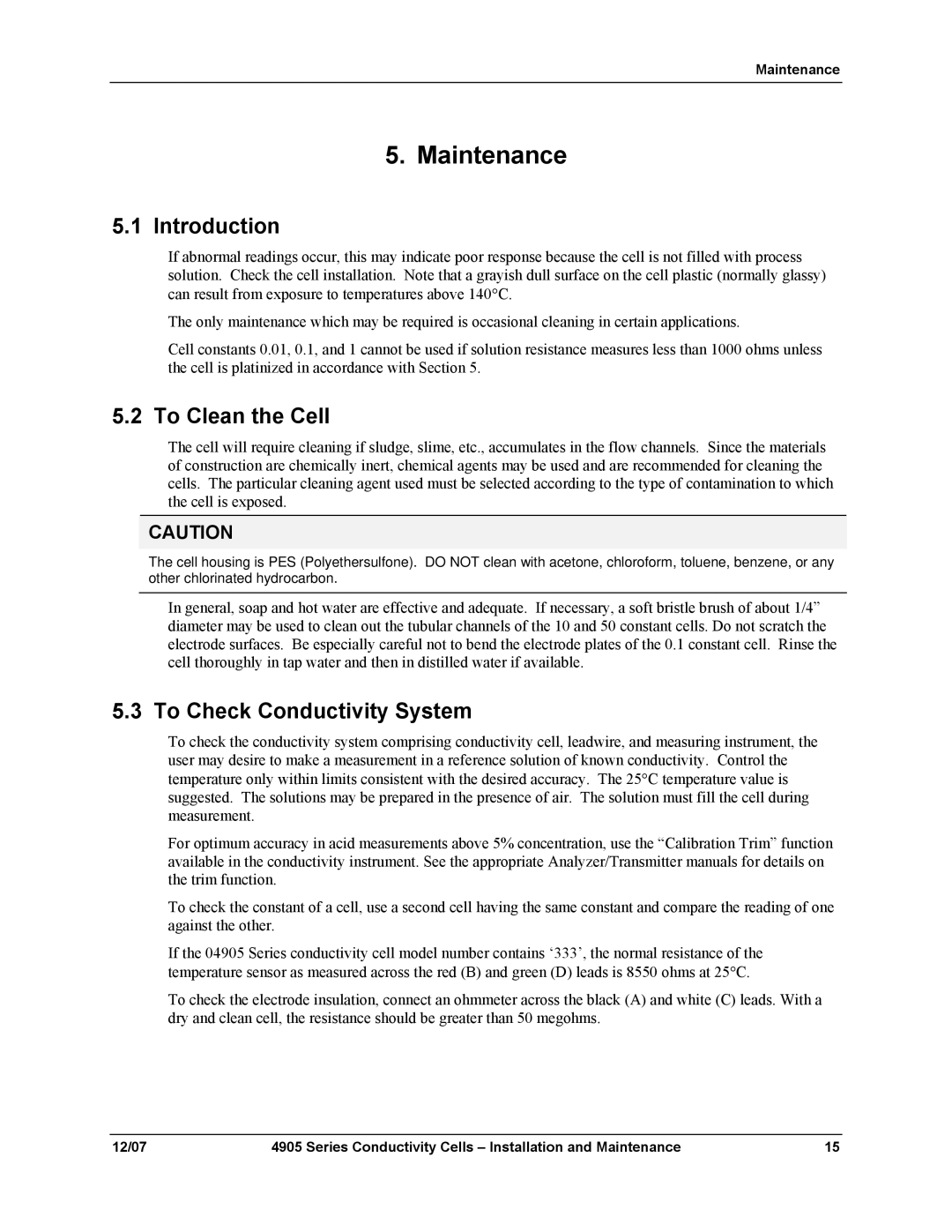
Maintenance
5. Maintenance
5.1 Introduction
If abnormal readings occur, this may indicate poor response because the cell is not filled with process solution. Check the cell installation. Note that a grayish dull surface on the cell plastic (normally glassy) can result from exposure to temperatures above 140°C.
The only maintenance which may be required is occasional cleaning in certain applications.
Cell constants 0.01, 0.1, and 1 cannot be used if solution resistance measures less than 1000 ohms unless the cell is platinized in accordance with Section 5.
5.2 To Clean the Cell
The cell will require cleaning if sludge, slime, etc., accumulates in the flow channels. Since the materials of construction are chemically inert, chemical agents may be used and are recommended for cleaning the cells. The particular cleaning agent used must be selected according to the type of contamination to which the cell is exposed.
CAUTION
The cell housing is PES (Polyethersulfone). DO NOT clean with acetone, chloroform, toluene, benzene, or any other chlorinated hydrocarbon.
In general, soap and hot water are effective and adequate. If necessary, a soft bristle brush of about 1/4” diameter may be used to clean out the tubular channels of the 10 and 50 constant cells. Do not scratch the electrode surfaces. Be especially careful not to bend the electrode plates of the 0.1 constant cell. Rinse the cell thoroughly in tap water and then in distilled water if available.
5.3 To Check Conductivity System
To check the conductivity system comprising conductivity cell, leadwire, and measuring instrument, the user may desire to make a measurement in a reference solution of known conductivity. Control the temperature only within limits consistent with the desired accuracy. The 25°C temperature value is suggested. The solutions may be prepared in the presence of air. The solution must fill the cell during measurement.
For optimum accuracy in acid measurements above 5% concentration, use the “Calibration Trim” function available in the conductivity instrument. See the appropriate Analyzer/Transmitter manuals for details on the trim function.
To check the constant of a cell, use a second cell having the same constant and compare the reading of one against the other.
If the 04905 Series conductivity cell model number contains ‘333’, the normal resistance of the temperature sensor as measured across the red (B) and green (D) leads is 8550 ohms at 25°C.
To check the electrode insulation, connect an ohmmeter across the black (A) and white (C) leads. With a dry and clean cell, the resistance should be greater than 50 megohms.
12/07 | 4905 Series Conductivity Cells – Installation and Maintenance | 15 |
